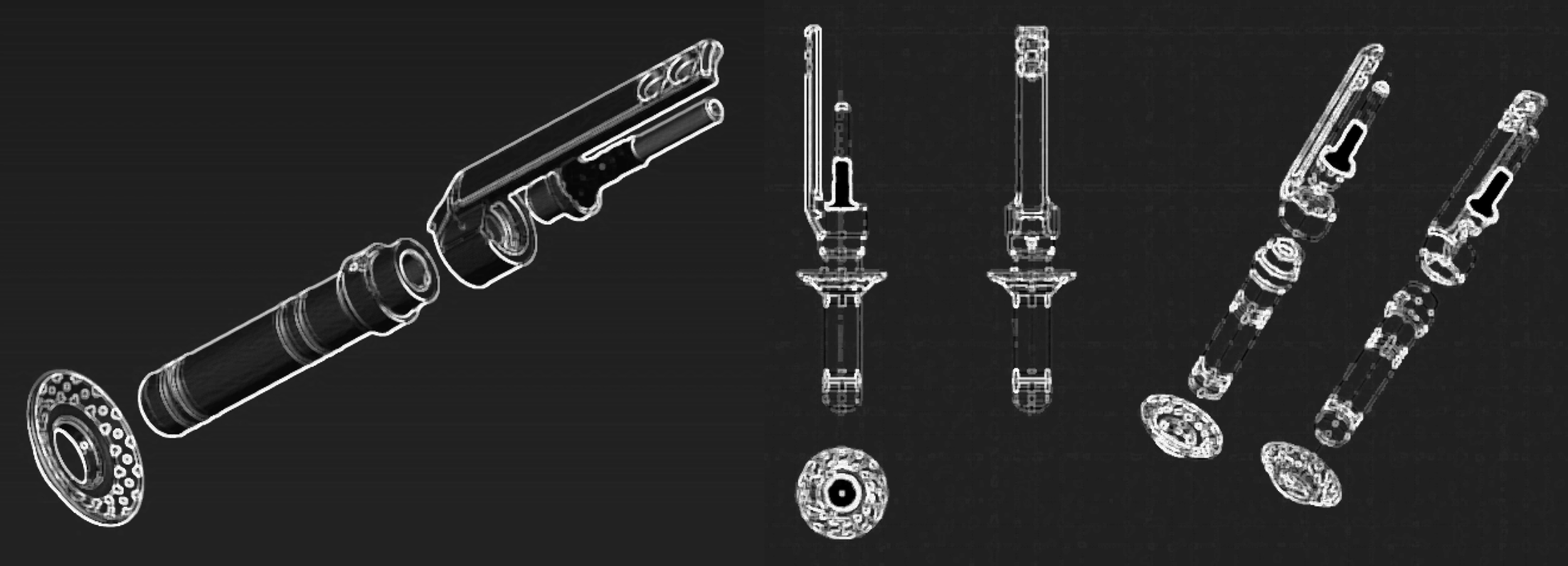
ITAP - REA
ITAP is designed to provide greater stability and control of the prosthesis compared to traditional external interface systems. The insertion of the pin into the amputated bone promotes direct anchoring of the prosthesis, allowing for better load transfer and a heightened sense of control and feedback.
However, this technique is not without limitations and complications, with infections being the foremost concern, as the transcutaneous pin breaches the epithelial barrier and can serve as a conduit for pathogens to reach the bone and surrounding soft tissues.
It is important to note that traditional amputation techniques also present significant problems associated with the prosthesis-skin interface, including erosion, ulcers, skin ruptures, or limitations due to poor patient tolerance of the external prosthesis system and its related complications, which must be managed by the animal owners.
The ITAP-REA prosthetic system by Arthemidex has been studied and designed to overcome these limitations and provide the best possible care and quality of life for animals and their owners.
ITAP-REA allows for:
Enhanced stability and control of the external prosthesis through an intramedullary transcutaneous metal pin that is inserted into the remaining bone of the amputated limb, facilitating proper load distribution transferred directly from the artificial foot and enabling muscle development similar to normal functioning.
Reduced risk of infections through an innovative porous flange system made of antibacterial material inserted immediately beneath the epidermis, preventing such occurrences from taking place.
Prompt restoration of ambulation through a single surgical procedure without having to wait for bone callus regeneration and skin healing, thanks to the integration of the intramedullary pin.
Elimination of waiting times for amputation surgery due to the ready availability of the system, which is manufactured in various sizes tailored to the anatomical requirements of the patients.
ITAP-REA is an intramedullary and percutaneous bone fixation system for limb prostheses. It falls into the category of endomedullary bone fixation systems, specifically the Axolotl type, and is a modular system through which a limb prosthesis is directly connected to the remaining bone portion in amputated patients.
The ITAP-REA system consists of four components:
An ENDOMEDULLARY STEM: the primary implantable element that connects the long bone of the amputated limb to the external prosthesis. The stem is cylindrical with a threaded base for coupling with the percutaneous stem and simultaneously securing the lateral stabilization plate. The proximal apex of the stem is equipped with a sighting system. The distal portion of the stem is covered by a porous structure for initial fixation that accelerates bone regrowth. It is available in various diameters and lengths to accommodate the different anatomies of the target patient population.
A PERCUTANEOUS STEM: the transcutaneous component of the system that connects the endomedullary stem to the external components, serving as an extracutaneous attachment site on which the limb prosthesis or single foot is mounted. The stem has a proximal flange with a threaded seat for coupling with the endomedullary stem and housing the lateral plate. The flange has a seating area to prevent rotation of the lateral plate. The outer part of the percutaneous stem is equipped with a system for attaching the external components and a containment cuff for suturing the skin. It is available in various diameters and lengths to adapt to the anatomies of the target patient population.
A LATERAL SUPPORT PLATE: a plate used to partially transfer the load from the endomedullary component to the percutaneous stem. The plate has proximal holes for screws. The distal part is characterized by an annular section that allows for fixed connection to the other two components. The annular section has an anti-rotational system. Another feature of the plate is its ability to deform elastically in the connection area between the actual plate and the annular section, allowing for load damping between the two stem components. This system is designed to prevent load transfer between the proximal part of the plate and the proximal part of the percutaneous stem, keeping the endomedullary stem unloaded and avoiding potential non-integration. The plate's "dynamicization" mechanism is achieved through a reduction in section size in the distal zone. Within this reduction, an elastic damping element, such as a cup spring, can be accommodated. It is available in various diameters and lengths to adapt to the anatomies of the target patient population.
A RETENTION CUFF AND SKIN SUTURING: a multi-perforated disc-shaped component that is attached to the percutaneous stem below the connection zone with the other components. It is made of porous material and serves to retain the remaining soft tissues and support the skin sutures. With an antibacterial process directly linked to the titanium material, it ensures long-term biological sealing, limiting the spread of infections. It is available in various diameters to adapt to the anatomies of the target patient population.




